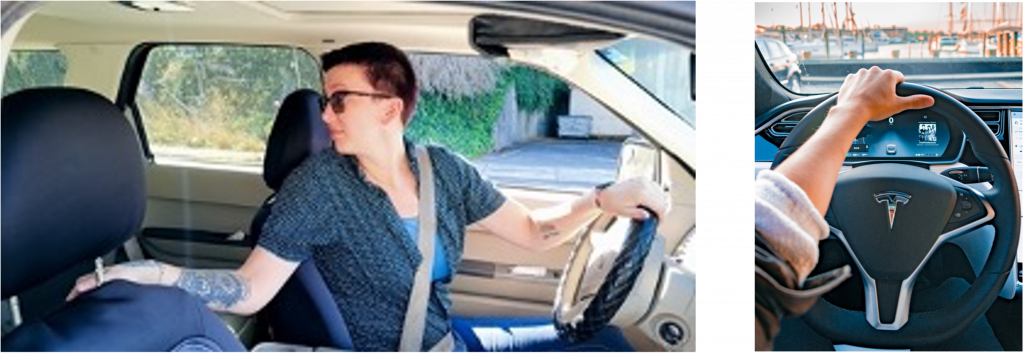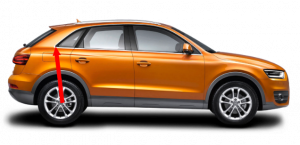Lesson Four: Backing (4.4)
Every week in the U.S., children are backed over by vehicles. Most are treated in emergency rooms and a small percentage are fatalities. In over 70% of these cases, a family member is behind the wheel.

 Dangers of Backing
Dangers of Backing
In Chapter 1, you learned about preparing to drive. As you approach your vehicle, what steps do you take to prepare to drive that will also assist with backing?
Your responsibility as a driver includes yielding to all traffic and pedestrians while backing. There are things you can do to reduce your risk. After looking around your vehicle for obstacles, enter the vehicle. Once inside, ensure your mirrors are correctly positioned and perform a 360º degree search. Use the tools inside the vehicle to help assist your backing maneuver. These tools include mirrors, back-up camera, backing assistance sensors, other passengers (if present). These tools are there to assist you but do not replace good searching techniques. Do not rely solely on your mirrors, cameras, or back-up assistance systems.
Target to the rear and perform ½ second glances to gather further information. What do you see? What parts of the vehicle are vision restrictions? Use inching speed while backing.
Backing Straight
When backing straight, it is important to sit properly in your seat. Place your left hand at the top of the steering wheel (12 o’clock) and place your right hand on the back of the passenger seat. The 12 o’clock hand position allows you to make small steering corrections while backing. Placing the right hand behind the passenger seat along with using your left foot for leverage allows you to lift your body to improve your view. Use your mirror and your eyes to see your path of travel. Decrease brake pressure and back at an inching speed.
Backing Turns
Knowing when to begin turning your tires is key to successful backing turns. This is called the pivot point. It is the center of the rear tires. What does the pivot point look like from inside the vehicle?

When backing and turning, sit properly in your seat. Hold the steering wheel at either 9 and 3 or 8 and 4. Use push-pull or hand over hand steering. Check your rear using the mirror and turning your head to see your path of travel. Slowly back straight until the pivot point aligns with the curb or line. Turn the steering wheel in the direction that you want the car to go.
 Backing Turns and Pivot Point
Backing Turns and Pivot Point
Essential Questions
-
How do you apply the SIM process while backing?
-
What is the correct hand position and steering techniques for backing straight and backing turns?
-
What is the best speed control option while backing?
-
Where is the pivot point and how do you use it?
Limit your ability to gather information about the condition of your
intended path.
The inside rear tire around which the vehicle pivots during backing turns.
The steering technique we use for most turns.
Pulling the steering wheel down with one hand while the other hand crosses over to pull the wheel farther down. Used for quick turns at speeds below air bag deployment speed.
The space your vehicle occupies as you drive toward the target.